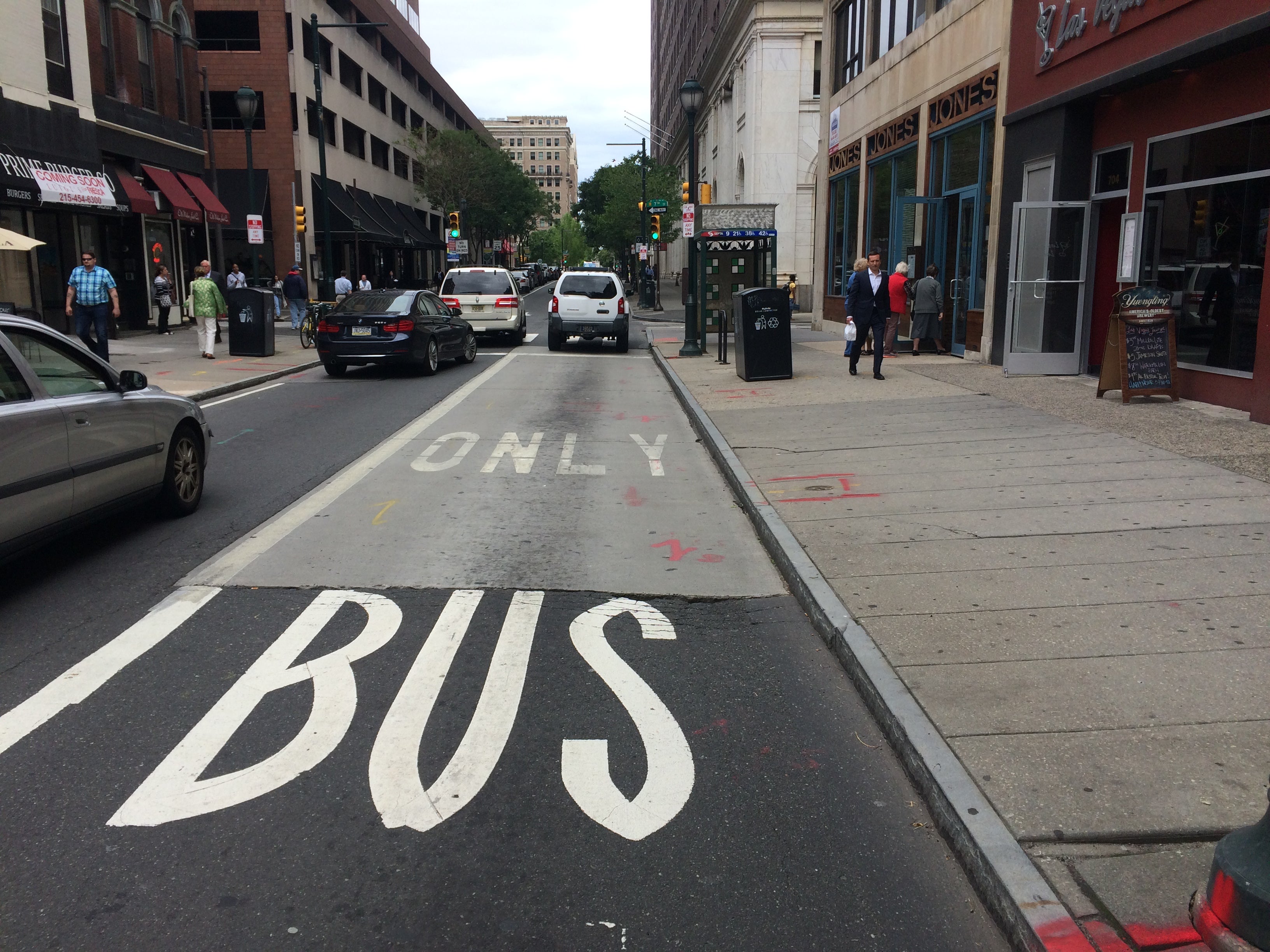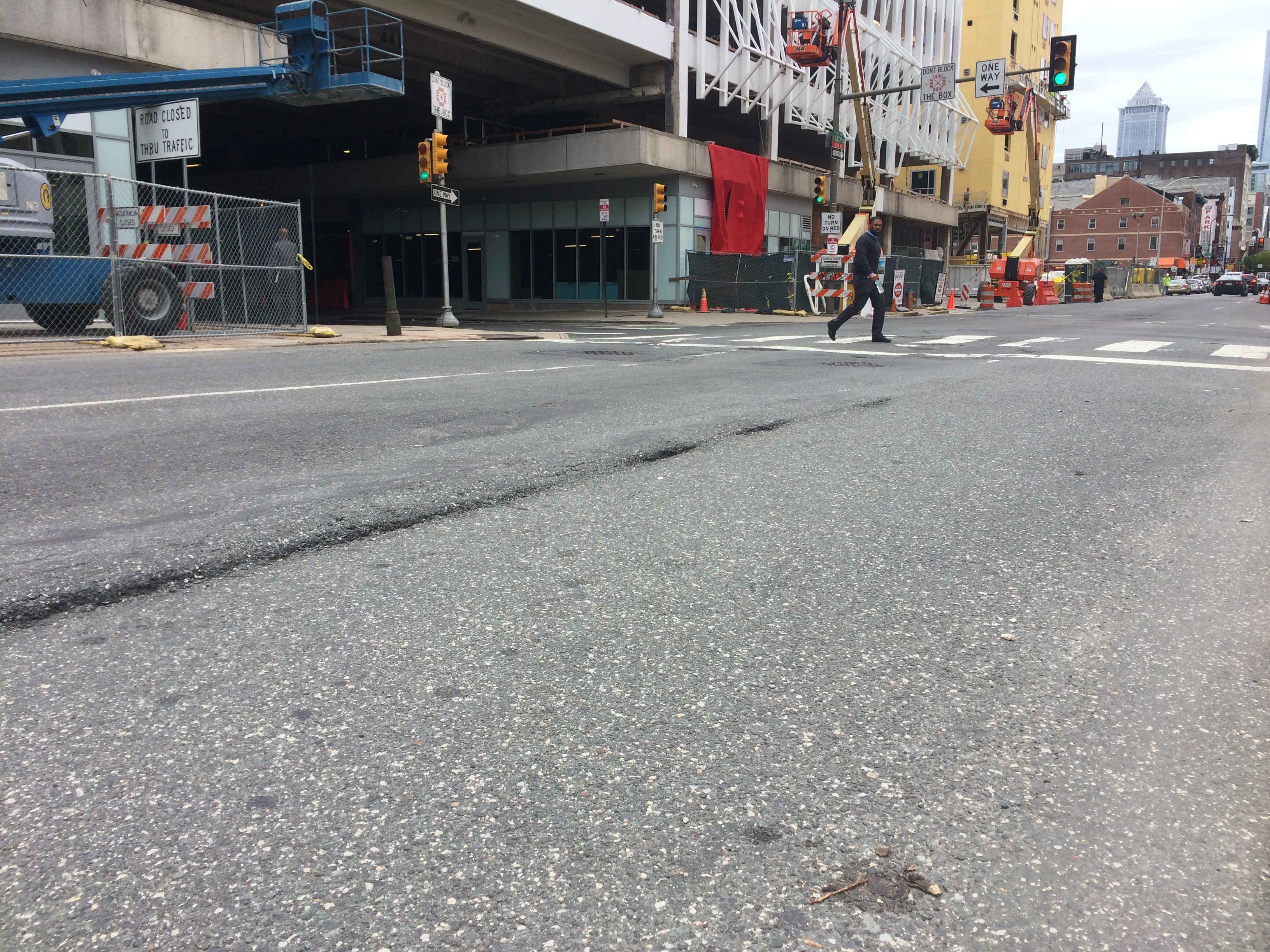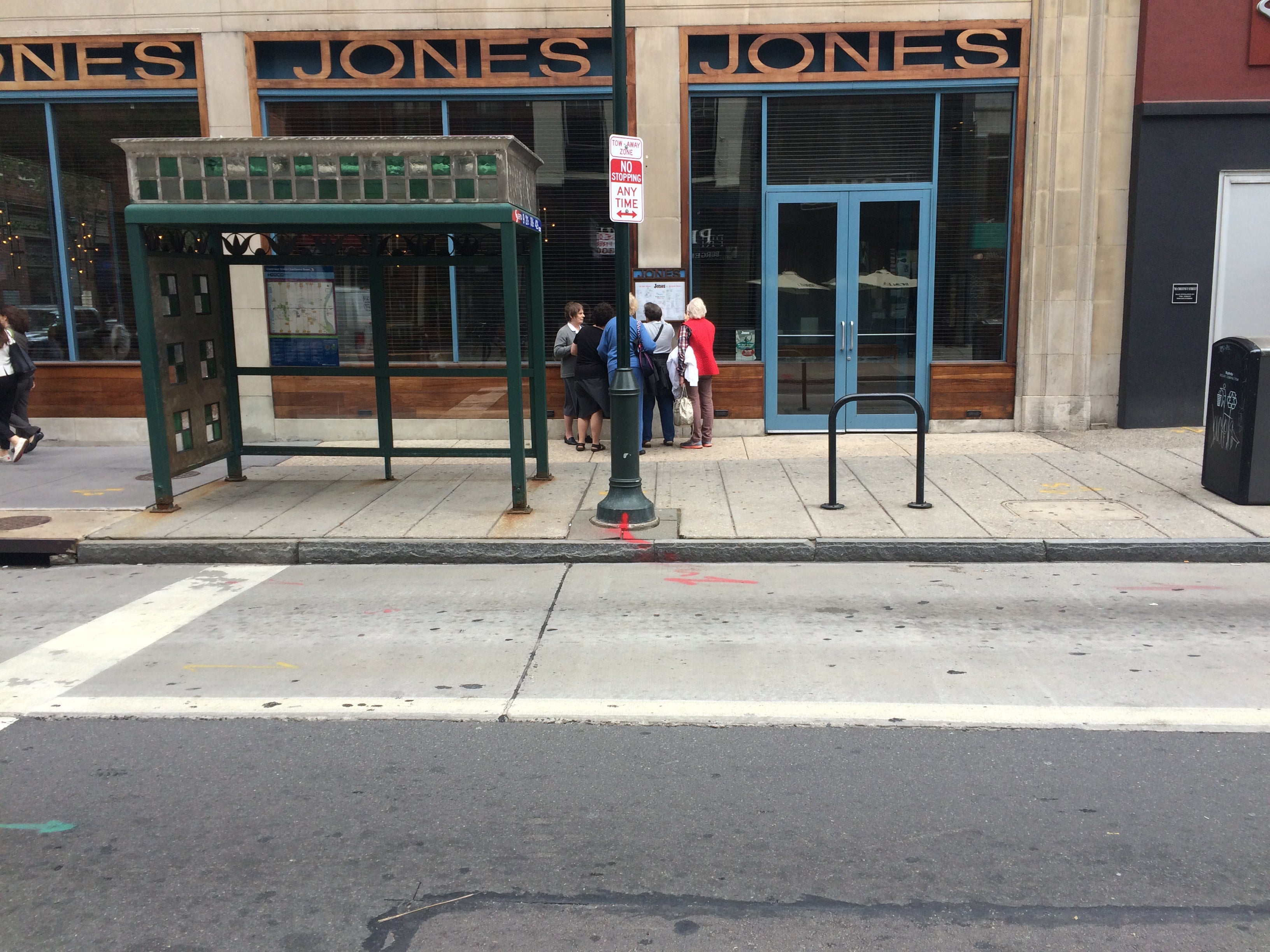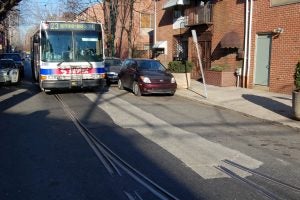Streetsplainer: What’s with those concrete pads in front of bus stops?

Welcome to Streetsplainers, an occasional series of answers to those often overlooked questions about our beleaguered/beloved transportation systems: Just what the heck is that thing in the road? Why on Earth would SEPTA do that? How does that weird doohickey work? E-mail Jim your questions, and he’ll chase down the answers, hopefully in a reliably on-time fashion.
In front of some SEPTA bus stops, you might have a concrete pad in place of the usual stretch of potholes and asphalt. What are those things, and why are they there?
They’re called “Bus Stop Pads” – I’m beginning to realize that engineers aren’t the most creative people – and they are there because of the buses.
Well, duh, you’re probably thinking. Like, buses are totally heavy, so like they for sure need, like, concrete there or whatever.
First off, it’s really odd that your internal monologue sounds like an early 90’s Valley Girl: you should really talk with a psychiatrist.
More importantly, the pads aren’t there because concrete can handle the weight better than asphalt, at least not entirely. There’s a bit more to it than that.
The author Robert Fulghum once wrote “Life is lumpy. And a lump in the oatmeal, a lump in the throat, and a lump in a breast are not the same lump. One should learn the difference.”
Today, we’re learning that difference, specifically about lumps in asphalt, like the one in the photo above. Those pavement waves, says SEPTA’s Assistant General Manager for Engineering, Maintenance & Construction Robert Lund, are caused by a combination of Philly’s sweltering summers, and the tremendous amount of force buses (and other large vehicles) exert on the asphalt during stops and starts.
Asphalt is considered a “flexible” pavement. Other pavement materials, like concrete, are considered “rigid.” When it gets hot, asphalt gets soft and malleable. And when soft asphalt has the tremendous amount of torque of large buses pushing against it, it tends to move. Concrete doesn’t have that problem.
So when you see wavy pavement, it’s often because that location has large trucks or buses frequently stopping, starting or turning there on hot days, pushing the asphalt around. Street engineers know that buses can cause these when they slow down and take off, so they put rigid concrete pads in front of most stops.
While wavy pavement is often caused by this phenomena, there can be other causes, said Lund, such as problems with the gravel or rock base underneath the top level. “Think of [a street] like lasagna. [There are] lots of different layers of different materials. When baked just perfect, it holds together, its great. But when something isn’t quite right there, when you slice it, it runs all over the plate.”
The pads are paid for and maintained by whatever agency responsible for the road, meaning Streets or PennDOT in Philadelphia. SEPTA doesn’t pay for them.
So, if asphalt gets so melt-y and Philly can get so steamy, why not say “Let’s take it back to the concrete streets?”
Quality Control, that’s why. Concrete streets are much harder to maintain. Whereas potholes in asphalt are relatively easy and cheap to patch, defects in concrete pavement require replacing the entire slab. And resurfacing, something Streets wishes it could do more regularly, is easier with asphalt: you just mill and put on new asphalt. It’s much harder with concrete.
Also, absent ripples or potholes, asphalt roads are much smoother rides than concrete.
And so, that’s why SEPTA’s buses have their concrete platforms, places where SEPTA bus drivers can say: “On a stage I rage and I’m rollin’.”
WHYY is your source for fact-based, in-depth journalism and information. As a nonprofit organization, we rely on financial support from readers like you. Please give today.








